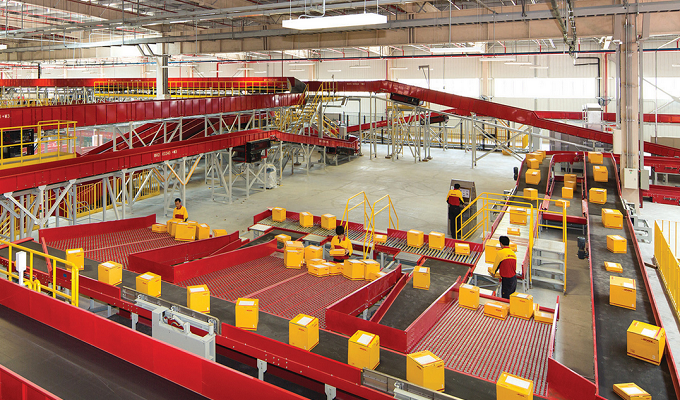

Upgrading Aid for Trade for the digital era (en)
the ones most in need
In a world of 4 billion google searches a day, 4 billion people remain disconnected from the internet. These contrasts matter for development; they matter for trade, and much more so than we imagined a decade ago when the Aid for Trade initiative was launched.
Aid for Trade has been fundamental in helping developing economies, in particular the least developed countries (LDCs), to build trade capacity and infrastructure to better profit from trade opening. But with the blazing trail of technology reshaping all aspects of human activity – including trade – the time has come for a ‘system upgrade’ to the aid we offer to the ones most in need.
Such an upgrade implies improving our ability to help developing countries to catch the wave of promising trade trends and ride with them. And one of them is e-commerce, which can be a powerful engine of growth, and a source of inclusiveness.
E-commerce is clearly trending. In 2015, the value of e-commerce worldwide was estimated at more than US$25 trillion. This is almost comparable to the total revenues of the world’s 500 largest companies (US$27.6 trillion) in the same year.
GLOBAL DISCREPANCIESE-commerce is big business. But there are sharp differences in how countries use it and subsequently profit from it. For instance, while between 60% and 80% of Europeans shop online, in Africa, less than 5% of the population does so. And in some countries, like Uganda, this share is as low as 1%.
According to UNCTAD’s business-toconsumer (B2C) e-commerce index, developing countries are clearly trailing behind developed ones in terms of readiness to engage in and benefit from e-commerce. The index is composed of four factors: 1) internet use; 2) credit card penetration; 3) postal reliability; and 4) the number of secure, encrypted internet servers per capita. The average score for developed countries is 71, whereas for Latin America and the Caribbean it is 42, for Southern, Eastern and South-Eastern Developing Asia it is 38, with Africa at the bottom with only 24.
There is a clear gap between developed and most developing countries in their ability to benefit from e-commerce. And if we do not do anything this gap will only widen.
E-commerce is a superb opportunity. It offers the possibility of bringing new, better and cheaper products to consumers, and it offers the possibility of opening new markets to anybody with a good idea, internet and a computer. Still, under the current circumstances, in many developing countries, e-commerce can exacerbate exclusion rather than inclusion, putting entrepreneurs in these countries at a disadvantage in the evolving digital economy.
AID FOR TRADE DECLINEDespite the growing importance of the digital economy for the achievement of the Sustainable Development Goals and the huge digital divides that still exist, the share of the information, communication and technology area in total Aid for Trade declined from 3% during the period 2002- 2005 to only 1% in 2015 (OECD and WTO, 2017).
This is why we all need to revise and update our Aid for Trade efforts. These need to be revamped and complemented, so that we can build a future where men and women, of all ages, can benefit from inclusive digital trade. This is the goal of the UNCTAD-led eTrade for all initiative.
UNCTAD is conscious about the urgency of the response needed. This is why it has created a Rapid e-Trade Readiness Assessment to help countries to quickly identify barriers to further e-commerce development. Assessments have already been completed for Bhutan and Cambodia. Burundi and Liberia are next in line. Many more African LDCs are expected to benefit from this exercise in the forthcoming 18 months.
There are a number of key challenges on a wide range of issues that need to be addressed for e-commerce to succeed. From internet access to access to finance; skills and training; to lack of trust and security. For instance, in LDCs, only 15% of the population has access to internet, and if you are a woman, you have 31% less access.
JOINT EFFORTSToday there are many organizations – national, regional and international – that offer assistance in different areas of e-commerce to developing countries. But current efforts are simply inadequate. They are highly fragmented. They are insufficient in scale and scope.
There is only one way we can face these challenges: together. This is what the eTrade for all initiative is about. This is how we aim to upgrade our Aid for Trade efforts.
E-Trade for all raises awareness of opportunities, challenges and solutions related to e-commerce in developing countries. It mobilizes financial and human resources for e-commerce projects and strengthens coherence and synergies among partners’ activities.
The main tool, an online platform (etradeforall. org), helps developing countries and donors navigate the supply of technical and financial support available to foster e-commerce and digital trade, learn about trends and best practices, and to raise visibility for the various partners’ initiatives and resources.
Since its launch in July 2016, 24 organizations have joined the initiative and more than 30 private-sector entities − including giants like Alibaba and eBay, as well as smaller businesses like Burundishop and Kapruka − have joined the Business for eTrade Development initiative, and we expect the group to expand further in 2017. This reflects the wide consensus that we need to act together.
Upgrading our aid for trade efforts is essential to ensure that e-commerce does not only benefit the big firms, but also the smaller ones; that it does not only benefit the privileged ones, but also any hard working man or women regardless age. It will be only then that we will be able to confidently say: e-Trade is an opportunity for all.



